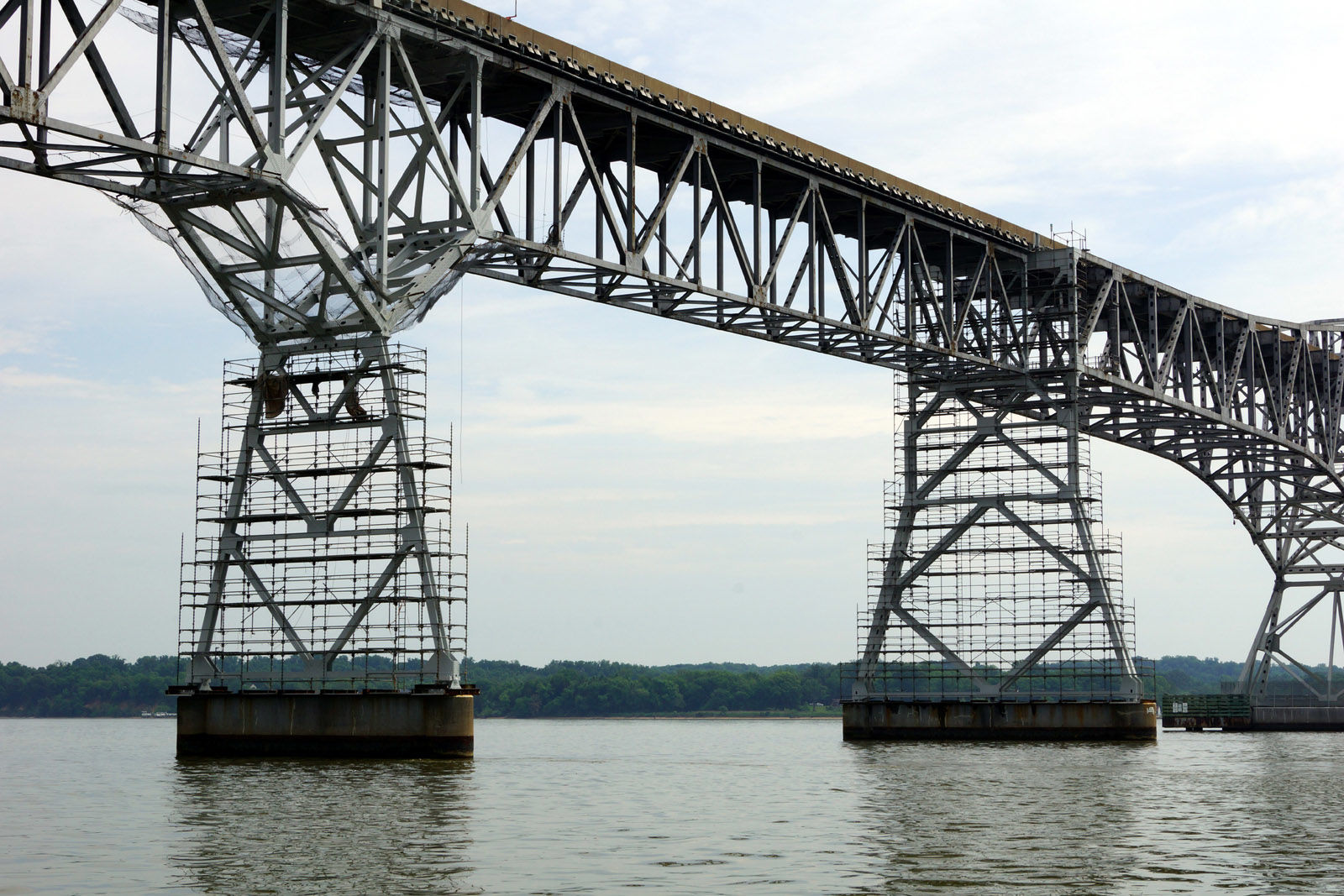
The new Nice-Middleton Bridge between Maryland and Virginia will be significantly slimmed down from originally promised plans.
The Maryland Transportation Authority Board voted Thursday to approve a $463 million construction contract for a new U.S. 301 bridge that will have two lanes in each direction for car traffic, but little else.
Virginia is contributing $13 million to the project for the pieces on the Virginia side of the river.
The current 1.7-mile bridge that opened in 1940 is only one lane each way. It cost $5 million to build over nearly three years.
More than 18,000 vehicles use it each day between Charles County and King George County near Naval Support Facility Dahlgren.
Local and regional leaders had pushed Maryland to include an originally promised bike and pedestrian path as part of the bridge, but the MDTA board led by Transportation Secretary Pete Rahn voted against that proposal Thursday at a meeting in Baltimore.
Under the selected bid, the path would have added $64 million to the cost.
The Hogan administration said that was too expensive after the administration cut toll rates on the bridge in 2015.
After Thursday’s vote, a number of Maryland officials expressed concerns that the state could end up doing the same backtracking on a bike and pedestrian path recently announced as part of plans to widen the Legion Bridge during controversial toll lane construction around the Capital Beltway.
Maryland and Virginia leaders say there will be a bike and pedestrian connection over the Potomac River on or near a rebuilt Legion Bridge.
Maryland had originally announced there would be a bike path and full 10-foot shoulders on a new Nice Bridge though.
The new bridge will have two-foot shoulders. It is expected to be in place for 100 years.
The existing Nice-Middleton bridge will be demolished after construction is complete. The state declined to keep the old span in place as a bike and pedestrian crossing, and Charles County could not afford to take ownership of the old bridge and keep it up on its own.
Instead, the state argues bike riders will be able to ride with U.S. 301 traffic on the new bridge despite highway speeds.
Construction is expected to begin next year, with the new bridge opening in 2023.
Tolls will be E-ZPass only.
Other actions this week
The MDTA board separately voted Thursday to change the rules on current E-ZPass-only roads to allow certain drivers to avoid extra fees. Starting next year, drivers will be able to register their license plates online to have their credit card automatically charged for tolls.
Those rates will still be higher than E-ZPass toll rates, but will be lower than what drivers pay for violations sent through the mail.
Toll rate changes also will cut rates next year for anyone towing small trailers or driving a motorcycle.
Among other action at the meeting, the MDTA also approved plans to widen part of Interstate 95 in Harford County where there are regular weekend backups between the Maryland House service plaza and Md. 24.







